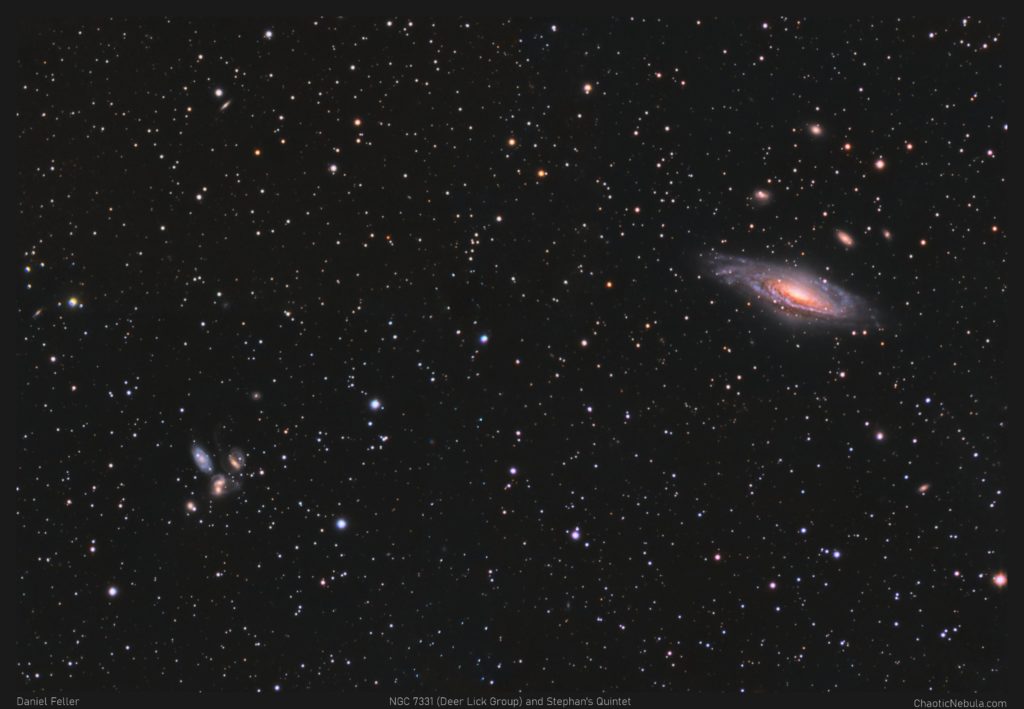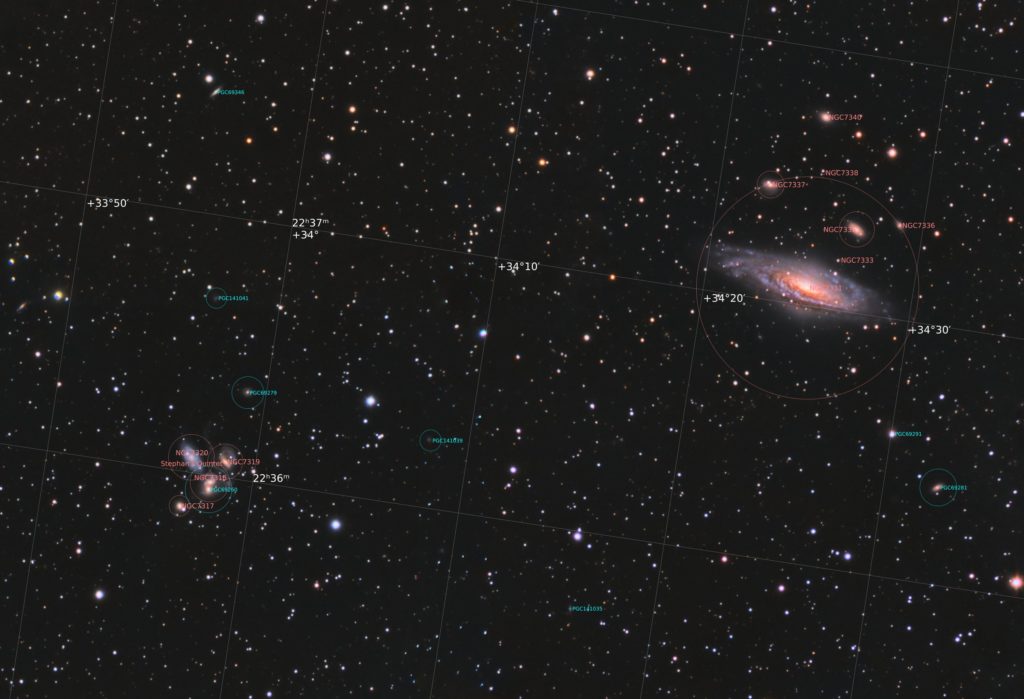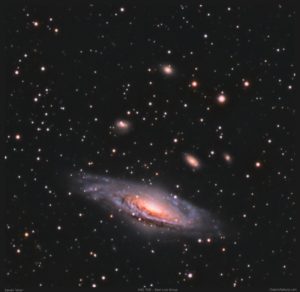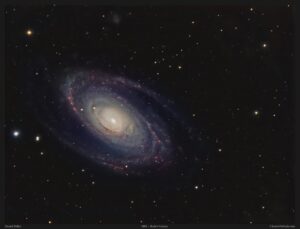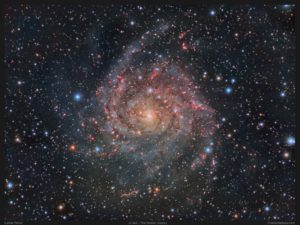A very busy section of the night sky. This image includes two different groups of galaxies: Deer Lick Group (upper-right) and Stephan’s Quintet (lower-left).
First, the big galaxy, NGC 7331, isn’t really part of the group of galaxies behind it. It just appears that way due to its location in the sky. For example, NGC 7331 is around 30 million light years away. But the other galaxies around it (NGC 7333, 7335, 7336, 7337, 7338, 7340) are around 300 million light years away. They are in the background and are not physically grouped with the big galaxy NGC 7331.
On the other side, we have Stephan’s Quintet. Out of the 5 galaxies in this group, 4 of them are interacting (NGC 7320 is not a physical member). NGC 7320 is around 40 million light years away, while the other members of the group are around 350 million light years away.
Within Stephan’s Quintet, NGC 7318 is actually two galaxies (A and B). If you look closely, you can see two cores. They are merging. It is expected that NGC 7319 will also eventually merge.
If you look really close at NGC 7318 (A and B), you can see brightness coming off of the right. That is a starburst region created by the merging of the two galaxies.
In addition, looking closely at NGC 7319, you can see a tail moving upward. Probably being cause by the pull of the galaxy into NGC 7318.
Looking even more closely across the entire image, you will start to pick up addition galaxies, very small. I’m counted at least 20 galaxies in total so far.
Truly an amazing area to observe.
Imaging Details
- Workflow: RGB
- Mosaic: 2×2
- Frame 1: Upper right
- Red: 30*600 seconds
- Green: 32*600 seconds
- Blue: 42*600 seconds
- Frame 2: Upper Left
- Red: 24*600 seconds
- Green: 24*600 seconds
- Blue: 24*600 seconds
- Frame 3: Lower right
- Red: 24*600 seconds
- Green: 24*600 seconds
- Blue: 24*600 seconds
- Frame 4: Lower Left
- Red: 30*600 seconds
- Green: 32*600 seconds
- Blue: 42*600 seconds
- Binning: 1×1
- Total Imaging Time: 58 hours
- Imaging Dates: (16 nights)
- 10/3/2021
- 10/4/2021
- 10/5/2021
- 10/6/2021
- 10/7/2021
- 10/16/2021
- 10/17/2021
- 10/29/2021
- 11/4/2021
- 11/6/2021
- 11/7/2021
- 11/25/2021
- 11/27/2021
- 12/3/2021
- 12/11/2021
- 12/12/2021
Location
From northern latitudes, the Deer Lick Group and Stephan’s Quintet is located just to the upper right of the great square of Pegasus. Ideally, those looking to image this group of galaxies should plan for the months of August through November. During that time, the galaxy appears highest from the horizon.

Imaging Notes
Some quick notes about imaging the Deer Lick Group and Stephan’s Quintet
- Data: Because this was a mosaic, I was only able to acquire around 15 hours of data per panel. For the panels with the main galaxies (upper-right and lower-left), I gathered more data than the other two quadrants.
- Exposure Length: Even in Bortle 7 skies, I’m able to capture R, G, B with a 10 minute exposure. Quite please with the results.
- Luminance: I opted away from creating a synthetic luminance frame. I tried with this image and didn’t provide any improvements.
- Focal Reducer: I continue to be impressed with the Starizona reducer instead of my Antares reducer. The results are spectacular. All of the strange reflections I got with Antares are now gone, which means my image calibration works perfectly.
